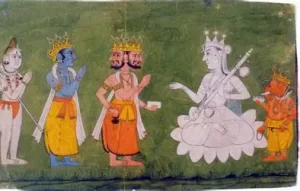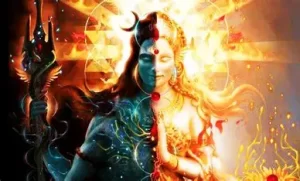One of the vital aspects of working as a Vedic counsellor is to explore your karmas and predispositions and to connect those past and present karmas to the act of service and renunciation of the desires of the results of actions (act as a selfless engagement). In this blog, I aim to explore the connection between the two on a deeper level and the various layers of involvement in the psychological process. 
In Vedantic philosophy, Karma and Karma Yoga are intimately connected, though they have distinct meanings and applications. Both concepts revolve around the idea of action and its consequences, but they are understood differently in terms of intention, attachment, and spiritual evolution.
- Karma as action: In Vedanta, literally means "action" or "deed and refers to the actions or deeds performed by an individual, whether physical, verbal, or mental. According to Vedanta, every action has consequences, and these consequences shape one's future experiences and are intimately linked with the cycle of birth, death, and rebirth (Samsara).
When we speak of karma and its consequences, we can relate to the idea that every action produces an effect; this effect can be good or bad depending on the nature of the action. Good actions lead to good karma, which generates positive outcomes, and vice versa. These results influence both the present and future effects of our actions, known as Karma Phala in Vedanta.
as Karma Phala in Vedanta.
This concept is based on the Law of Karma, which emphasises the idea of personal responsibility for our actions. If we act with malicious intentions or personal selfishness, we create a cycle of attachment and suffering that keeps us in this material world and in the cycle of birth and death (Samsara). The more an individual is bound by desires and ego, the more karma they accumulate, which perpetuates their entanglement in Samsara. However, if we follow the path of goodness and selfless action, we are released from attachment and suffering and closer to jnana and self-knowledge.
- Karma Yoga as the path of service, which connects with the performing actions selflessly, without attachment to the fruits or outcomes of those actions. The term "yoga" here refers to the union of the self with the Divine, achieved through the practice of selfless service (Seva) and detachment from the results of one's actions. This is the key point of Karma yoga: to have a renunciation of attachment to the fruits of actions. To perform as if every action were an offering to the Divine without being attached to the results, whether success or failure. This is in stark contrast to the usual approach to action, where people act primarily for personal gain or to avoid negative consequences.
The focus of Karma yoga is on the intention behind the action and not the outcome. When actions are offered selflessly to God or the greater good, they become purifying and liberating, as opposed to binding.
From a Vedantic perspective, Karma is viewed as an action, and karma yoga is considered a selfless action, both of which are interconnected yet serve distinct functions in the journey toward liberation (Moksha). Karma is binding and can lead us to the cycle of cause and effect and birth and death (Samsara), unaware of the true nature as Brahman. On the other hand, Karma yoga leads us to liberation by helping us transcend the bondage of karma. By performing actions selflessly, without attachment to results, the practitioner purifies the mind and heart. This process leads to freedom from the effects of karma, as it uproots the egoic desires and attachments that generate new karma.
In the Bhagavad Gita, Lord Krishna emphasises: 
- Karma (Action): "You have the right to perform your prescribed duties, but you are not entitled to the fruits of your actions. Never consider yourself to be the cause of the results of your activities, nor be attached to inaction." (Bhagavad Gita 2.47)
- Karma Yoga (Selfless Action): "Perform your actions with detachment, offering the fruits of your actions to Me. By doing so, you will be freed from the bondage of karma and will attain liberation." (Bhagavad Gita 9.22)
And in the Mundaka Upanishad (3.2.6) states: "When one performs actions without attachment, it becomes purified, and through purity, the Self is realised. The realisation of the Self is liberation from the cycle of birth and death."
Hari om tat sat.